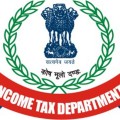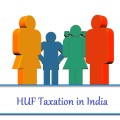E-filing of Income Tax Returns for AY 2021-22
ITR filing due date
The CBDT vide Circular no. 17/2021, dated 09-09-2021, has extended due dates for filing returns (ITRs) for Assessment Year 2021-22 (Financial Year 2020-21). The revised due dates for filing of ITRs for various types of assessees are as follows:
|
S. No. |
Particulars |
Due Date as per section 139 (1) |
Extended Due Date by CBDT |
| (a) | In any other case | 31-07-2021 | 31-12-2021 |
| (b) | If assessee is required to furnish a report of transfer pricing (TP) Audit in Form No. 3CEB | 30-11-2021 | 28-02-2022 |
| (c) | If the assessee is a partner in a firm, who is required to furnish a report of Transfer Pricing (TP) Audit in Form No. 3CEB | 30-11-2021 | 28-02-2022 |
| (d) | If an Individual is a spouse of a person, being a partner in a firm required to furnish a report of Transfer Pricing (TP) Audit in Form No. 3CEB and the provisions of section 5A apply to such spouse. | 30-11-2021 | 28-02-2022 |
| (e) | Company assessee not required to furnish transfer pricing audit report in Form No. 3CEB | 31-10-2021 | 15-02-2022 |
| (f) | If the assessee is required to get its accounts audited under Income-tax Act or any other law | 31-10-2021 | 15-02-2022 |
| (g) | If the assessee is a partner in a firm whose accounts are required to be audited. | 31-10-2021 | 15-02-2022 |
| (h) | If an Individual is a spouse of a person, being a partner in a firm whose accounts are required to be audited, and the provisions of section 5A apply to such spouse. | 31-10-2021 | 15-02-2022 |
Filing the Return of Income
The taxpayer has to communicate the details of his taxable income/loss to the Income -tax Department. These details are communicated to the Income-tax Department in the form of return of income. In this part you can gain knowledge about various provisions and procedure relating to furnishing (i.e. filing) the return of income. The provisions discussed in this part are applicable for furnishing the return of income for the assessment year 2021-22, i.e., financial year 2020-21.
Forms of return prescribed under the Income -tax Law:
Forms of return prescribed under the Income -tax Law for the assessment year 2021-22
| Return Form | Brief Description |
| ITR – 1 | Also known as SAHAJ is applicable to a ordinarily Resident individual having salary or pension income or income from one house property (not a case of brought forward loss or loss to be carried forward) or income from other sources (not being lottery winnings and income from race horses and in come chargeable to tax at special rates). However, an individual who is a director in a company or has held equity shares of an unlisted company shall not be eligible to use ITR -1.
Further, the ITR-1 shall not be available to a taxpayer in whose case the tax has been deducted on cash withdrawal under Section 194N or tax has been deferred in respect of ESOPs allotted by an eligible start- up. |
| ITR – 2 | It is applicable to an individual or an Hindu Undivided Family not having income chargeable to income-tax under the head “Profits or gains of business or profession”. |
| ITR – 3 | It is applicable to an individual or a Hindu Undivided Family who has any income chargeable to tax under the head business or profession. |
| ITR – 4 | Also known as SUGAM is applicable to individuals or Hindu Undivided Family or partnership firm who have opted for the presumptive taxation scheme of section 44AD/44ADA/44AE. |
| ITR – 5 | This Form can be used by a person being a firm, LLP, AOP, BOI, artificial juridical person referred to in section 2(31)(vii), co- operative society, local authority Private Discretionary Trust, Society registered under Society Registration Act, 1860, trust other than trusts eligible to file ITR 7, estate of deceased person, estate of an insolvent, business trust and investment fund. However, a person who is required to file the return of income under section 139(4A) or 139(4B) or 139(4C) or 139(4D) shall not use this form (i.e., trusts, political parties, institutions, colleges.) |
| ITR – 6 | It is applicable to a company, other than a company claiming exemption under section 11 (exemption under section 11 can be claimed by charitable/religious trust). |
| ITR – 7 | It is applicable to a persons including companies who are required to furnish return under section 139(4A) or section 139(4B) or section 139(4C) or section 139(4D) (i.e., trusts, political parties, institutions, colleges.). |
| ITR – V | It is the acknowledgement of filing the return of income. |
ITR Form – 1 (SAHAJ)
Return Form ITR – 1 (SAHAJ) can be used by a ordinarily resident individual whose total income includes:
- Income from salary/pension; or
- Income from one house property (excluding cases where loss is brought forward from previous years or loss to be carried forward; or)
- Income from other sources (excluding winnings from lottery, income from race horses and income chargeable to tax at special rates).
Further, in a case where the income of another person like spouse, minor child, etc., is to be clubbed with the income of the taxpayer, this return form can be used only when such income falls in any of the above categories.
ITR Form – 2
This Return Form is to be used by an individual or an Hindu Undivided Family who is not having income chargeable to income-tax under the head “Profits or gains of business or profession”.
Further, in a case where the income of another person like spouse, minor child, etc., is to be clubbed with the income of the taxpayer, this Return Form can be used if income to be clubbed falls in any of the above categories.
ITR Form – 3
Form ITR – 3 can be used by an individual or a Hindu Undivided Family who is having income under the head business or profession.
ITR Form – 4 (SUGAM)
Form ITR – 4 (SUGAM) can be used by an individual/HUF/Firm whose total income for the year includes :
- Business income computed as per the provisions of section 44AD or 44AE; or
- Income from profession computed as per the provisions of section 44ADA; or
- Income from salary/pension; or
- Income from one house property (excluding cases where loss is brought forward from previous years or losses to be carried forward); or
- Income from other sources (excluding winnings from lottery and income from race horses).
Further, in a case where the income of another person like spouse, minor child, etc., is to be clubbed with the income of the taxpayer, this return form can be used where income to be clubbed falls in any of the above categories.
ITR Form – 5
Form ITR-5 can be used by a person being a firm, LLP, AOP, BOI, Artificial Juridical Person (AJP) referred to in section 2(31)(vii), local authority referred to in section 2(31)(vi), representative assessee referred to in section 160(1)(iii) or (iv), cooperative society, society registered under Societies Registration Act, 1860 or under any other law of any State, trust other than trusts eligible to file Form ITR-7, estate of deceased person, estate of an insolvent, business trust referred to in section 139(4E) and investments fund referred to in section 139(4F).
ITR Form – 6
Form ITR – 6 can be used by a company, other than a company claiming exemption under section 11 (exemption under section 11 can be claimed by a charitable/religious trust).
ITR Form – 7
Form ITR – 7 can be used by persons including companies who are required to furnish return under section 139(4A) or section 139(4B) or section 139(4C) or section 139(4D) (i.e., trusts, political parties, institutions , colleges, etc.).
Form 26AS
The Income-tax Department maintains the database of the total tax paid by the taxpayer (i.e., tax credit in the account of a taxpayer). Form 26AS is an annual statement maintained under Rule 31AB of the Income-tax Rules disclosing the details of tax credit in the account of the taxpayer as per the database of Income-tax Department. In other words, Form 26AS will reflect the details of tax credit appearing in the Permanent Account Number of the taxpayer as per the database of the Income-tax Department. The tax credit will cover TDS, TCS and tax paid by the taxpayer in other forms like advance tax, Self-assessment tax, etc. The provisions of Form 26AS is governed by section 203AA of the Income-tax Act, 1961 which provides that the Director-General of Income- tax systems shall deliver a statement in Form 26AS to every person from whose income the tax has been deducted or collected and in whose respect tax has been paid. Income- tax Department will generally allow a taxpayer to claim the credit of taxes as reflected in his Form 26AS. File Income Tax Return Just in Rs.399/-.
Check List for Individual Assessee for Filing Income Tax Return
- Copy of PAN card or Copy of Last Year Return
- All Bank account including joint banks account
- FORM 26AS (Tax Statement) and copies of Advance Tax/Self Assessment Payment challans
- Form 16 / Salary Certificate (downloaded from TRACE) received from the Employer
- Details of Rental Income House Property, Interest certificate issued by bank for housing loan, Rent Paid Details in case resides in rented house.
- Details of Capital Gains on Shares & Securities, Land & Buildings etc.
- Stock statement in case of trading in shares etc. (specifying sale and purchase value of shares)
- Details of investment in Capital Gains Accounts Scheme
- Bank Passbook/Statement or interest income certificate (Both SB interest and FDR)
- PPF passbook for interest & Deposited Fund during the previous year
- Dividend warrants/amount
- Details of accrued interest on NSC during the year.
- Details of other income such as interest from parties, income from winning of lottery, horse races etc.
- Life and medical insurance payment receipts
- Fixed deposit receipts (eligiable for section 80C)
- Repayment certificate for housing loan
- Deposit receipts for senior citizen saving scheme.
- Tuition fees receipts of children
- Copies of donation receipts containing PAN of donnee (for section 80G)
- Any other tax saving investment receipts/proof
The above list is suggestive and may be change according to facts of assessee to assessee.





Income Tax rates for assessment year may be placed on this page also.